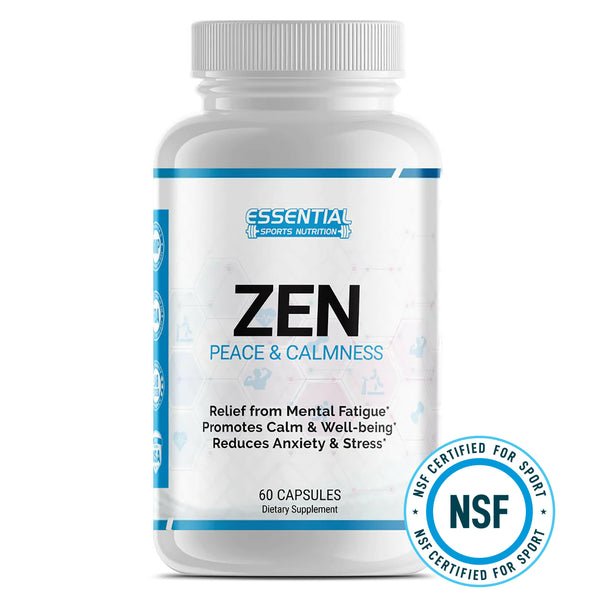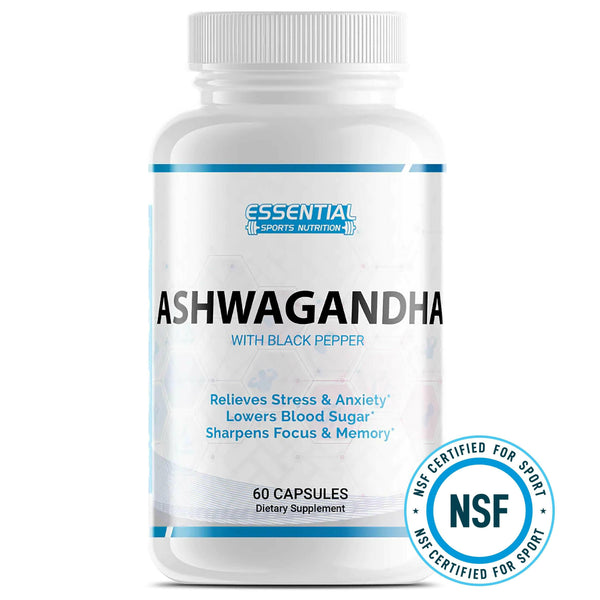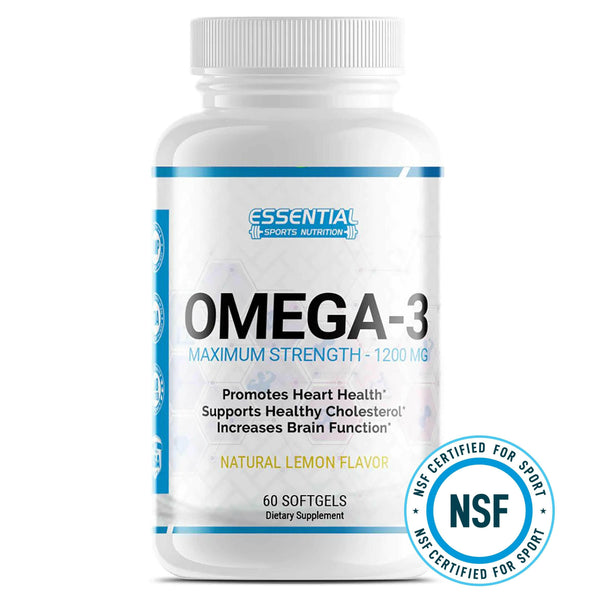Food Sources of Magnesium for Energy and a Heart-Healthy Diet
Feeling tired or weak might mean you're not getting enough magnesium. This mineral is key for our health, offering benefits such as improved muscle function, bone density, and heart health.
It also contributes to energy production, nervous system regulation, and blood sugar control, potentially reducing the risk of conditions like diabetes. Studies have shown magnesium may even aid in migraine relief, stress reduction, and better sleep quality.

Here are some top magnesium-rich foods to incorporate this super mineral into your daily diet:
Dark Leafy Greens: Spinach, kale, Swiss chard, and collard greens are excellent sources of magnesium. They are also packed with other essential nutrients like iron and vitamins.
Nuts and Seeds: Almonds, cashews, peanuts, pumpkin seeds, and sunflower seeds are all rich in magnesium. Snacking on these nuts and seeds or adding them to salads, yogurt, or smoothies is an easy way to boost your magnesium intake.
Whole Grains: Whole grains like brown rice, quinoa, oats, and whole wheat are good sources of magnesium. They also provide fiber and other nutrients, making them a nutritious addition to your diet.
Legumes: Beans, lentils, and peas are rich in magnesium, as well as protein and fiber. Incorporating these legumes into soups, stews, salads, or side dishes can help increase your magnesium intake.
Avocados: Avocados are not only delicious but also a great source of magnesium. They are versatile and can be added to sandwiches, salads, or eaten on their own as a healthy snack.
Bananas: Bananas contain magnesium along with potassium, making them a nutritious and convenient snack option. They can be eaten on their own, added to smoothies, or sliced onto oatmeal or yogurt.
Dark Chocolate: Dark chocolate with a high cocoa content is a surprising source of magnesium. Enjoying a square or two of dark chocolate as an occasional treat can provide a magnesium boost along with antioxidants.
Fish: Some types of fish, such as salmon, mackerel, and halibut, contain magnesium. Incorporating fish into your diet a few times a week can help increase your magnesium intake along with providing omega-3 fatty acids and protein.
Key Takeaways
- Dark chocolate is both tasty and full of minerals like magnesium, helping to reduce inflammation and heart disease risk. Just one ounce offers 64.6 mg of magnesium.
- Avocados are another great source, providing not only magnesium but also fiber, healthy fats, and vitamins. They support heart rhythm and bone health.
- Nuts such as almonds, cashews, and Brazil nuts are high in magnesium and potassium which benefit your heart and blood sugar levels.
- Legumes like beans, lentils, and tofu bring a good dose of magnesium along with benefits for heart health and managing diabetes.
- Eating foods rich in magnesium helps lower the risk of diseases such as hypertension, type 2 diabetes, osteoporosis, and migraines by supporting muscle function, bone density,
Understanding Magnesium in Diet
Magnesium plays a key role in our health. It helps with nerve and muscle function. Without enough magnesium, you might get muscle cramps, feel tired, and be irritable. Our body needs this mineral to work right.
You can't make magnesium in your body, so you have to eat foods that have it.
Eating different foods rich in magnesium is vital. Green leafy vegetables are great sources of this nutrient. To stay healthy, include a variety of these magnesium-packed foods in your meals.
This way, you give your body what it needs for strong muscles and nerves.
Health Benefits of Getting Enough Magnesium in Your Diet

Magnesium helps lower high blood pressure and reduces the risk of heart disease. It also aids in controlling diabetes, strengthens bones, and prevents migraines.
Hypertension and cardiovascular disease
Eating meals that include foods with high magnesium content can lead to better heart health. Studies show that diets high in this nutrient help lower the chance of developing high blood pressure and heart problems.
People with higher magnesium intake often have a lower risk of stroke and coronary artery disease.
Taking oral magnesium supplements also plays a role in fighting high blood pressure and heart issues. This adds another tool for keeping your heart working well, alongside a balanced diet and regular exercise.
Choosing foods filled with magnesium is a smart move for anyone looking to improve their cardiovascular health.
Type 2 diabetes
People with type 2 diabetes often find their blood magnesium levels are low. This makes sense because diets rich in magnesium can significantly cut the risk of developing this condition.
Supplements of magnesium also show promise, improving metabolic profiles for those already managing diabetes. Foods high in magnesium might be very good for folks with this kind of diabetes.
Studies hint that more magnesium in your diet could ward off type 2 diabetes. Making sure to eat enough foods loaded with this mineral may help control blood sugar and fight insulin resistance.
This shows how vital a nutrient like magnesium is for keeping blood glucose under wraps and promoting overall well-being in individuals facing challenges with this health issue.
Osteoporosis
Low magnesium levels lead to less bone density and a higher chance of getting osteoporosis. Eating foods high in magnesium can help bones stay strong. Both men and women see their bone strength improve with more magnesium in their diet.
Taking magnesium supplements might prevent or help treat osteoporosis. Most of the magnesium in our bodies is in our bones. Keeping the right amount of this mineral is key for good bone health.
Migraine headaches
Magnesium plays a key role in preventing migraine headaches. People with low magnesium often face more migraines. Magnesium oxide, a form of this mineral, is used to treat and keep these headaches away.
Studies show that taking magnesium supplements can cut down on how often you get migraines.
The National Headache Foundation suggests 400-600 mg of magnesium daily to lessen migraine frequency. Since the body needs this mineral for many functions, boosting your intake might reduce headache days.
Magnesium glycinate, in particular, has shown promise in stopping migraines before they start. The best time to take magnesium varies but adding it could make a big difference for those struggling with these painful headaches.
10 Essential Food Sources that are Rich in Magnesium
Finding magnesium in your meals is easy with the right foods. This key mineral supports your body in many ways, from keeping bones strong to making sure your heart stays healthy.
Dark chocolate
Dark chocolate is not just a tasty treat. It's packed with minerals like magnesium, iron, and zinc. Eating it can cut down on swelling in the body and lower heart disease risk. Just one ounce of dark chocolate which is 70 to 85 percent cocoa offers up to 64.6 mg of magnesium.
That’s a delicious way to meet your mineral needs.
This sweet snack also has health-boosting items like polyphenols and flavonoids which are good for you. But remember, dark chocolate comes with lots of calories and sugar too. So, enjoy it but don't overdo it.
Make sure to eat other foods rich in magnesium for the best health benefits.
Avocados
Avocados are packed with magnesium, helping you meet your daily needs. They also give your body lots of fiber, healthy fats, and important vitamins like B vitamins, vitamin K, copper, and vitamin C.
Adding avocados to your meals boosts not just magnesium but potassium levels too.
Eating avocados often helps you get more nutrients that support a strong heart rhythm and bone mineral density. They are key for a balanced diet alongside other magnesium-rich foods such as whole grains, leafy vegetables, low-fat dairy products, and yogurt.
Enjoying this creamy fruit can make a big difference in meeting health goals without relying on dietary supplements or bottled waters enriched with minerals.

Nuts
Nuts, including almonds, cashews, and Brazil nuts, pack a lot of magnesium into small servings. Just one ounce of cashews offers 83 mg of this essential mineral. They’re not just rich in magnesium but also in potassium, making them great for your heart and blood sugar levels.
Eating nuts supports healthy bones too. They provide nutrients like magnesium and manganese that are crucial for bone strength. Plus, the unsaturated fats found in nuts help fight against heart disease and diabetes by keeping blood vessels healthy.
Legumes
Legumes pack a powerful punch of magnesium. They include beans, lentils, and soy products like tofu. These foods are not just good for you; they're key to battling magnesium deficiency.
Eating them helps your body in many ways, from keeping your heart healthy to managing blood sugar levels. They are perfect for anyone looking to boost their magnesium intake naturally.
Including legumes in your meals is easy and smart. You can add black beans to tacos or make a hearty lentil soup. For those who enjoy Asian cuisine, adding tofu to stir-fries offers an excellent source of magnesium as well as protein.
With such versatility, legumes fit into any diet plan wonderfully, helping ensure you get enough of this essential nutrient every day without having to rely on supplements.

Tofu
Tofu, made by curdling soy milk with a calcium or magnesium compound, is packed with nutrients. This food offers iron, potassium, manganese, selenium, phosphorus, copper, and zinc.
It's not just rich in minerals; tofu also provides high-quality proteins including all essential amino acids your body needs.
Choosing firm tofu can boost your intake of magnesium along with iron, phosphorus, and zinc. Switching meat out for tofu might lower your blood cholesterol levels and cut the risk of heart disease.
Tofu stands out as a versatile and healthful option in any diet plan focused on well-being.
Seeds
Seeds like hemp, pumpkin, and chia are powerhouses of magnesium. One serving can give you a large amount of your daily needs. These seeds make it easy to get enough magnesium in your diet.
They are not just good for magnesium; they also pack other nutrients.
You can add these seeds to many dishes. Sprinkle them over salads or mix them into yogurt. This makes getting your daily dose of magnesium both tasty and effortless. Eating a variety of seeds ensures you get plenty of this vital mineral for better health.

Whole grains
Whole grains like wheat, oats, barley, buckwheat, and quinoa pack a big punch of magnesium. They also bring plenty of fiber, vitamins, and minerals to your plate. Eating these grains can make your meals more nutritious.
They help you stay full longer too.
Eating whole grains helps fight off magnesium deficiency. This keeps your body running smoothly. Foods like shredded wheat or brown rice are great choices for adding more whole grains to your diet.
They make it easy to get the nutrients you need for good health.
Some fatty fish
Fatty fish like mackerel, salmon, halibut, and tuna pack a big punch of magnesium. They also bring vitamin D and omega-3 fatty acids to your plate. Omega-3s are good fats that your body needs to stay healthy.
Eating these types of fish can help boost your heart health and lower risks tied to diseases.
Oily fish stand out as the top food for getting EPA and DHA, which are key for brain function and overall wellness. Adding them to your diet supports everything from muscle contractions to managing blood sugar levels.
So, including fatty fish in meals not only tastes great but does wonders for your body too.

Bananas
Bananas give you 8% of your daily magnesium needs. They are also packed with potassium and fiber. This mix helps keep your heart in good shape, matching diets like DASH that aim for a healthy heart.
Eating bananas adds important minerals and vitamins to your meals.
This fruit also contains potassium and pectin, a kind of fiber that's great for your diet. Bananas make getting these nutrients easy and tasty. They fit well into any meal or can be enjoyed as a quick snack anytime you need an energy boost or want to fill up on good stuff without eating too much.
Leafy greens
Leafy greens like spinach, kale, and Swiss chard are packed with magnesium. These vegetables are superfoods that give you many vitamins and minerals. They make your brain healthier and improve your well-being.
Eating a mix of these green vegetables helps stop magnesium deficiency. This keeps you healthy by playing a key role in preventing problems related to lack of magnesium.
Tips to Improve Magnesium Absorption
Boosting magnesium absorption is key to getting its full benefits. Eating a variety of magnesium-rich foods can help your body absorb it better. Here are some tips:
- Pair magnesium-rich foods with sources of vitamin D (salmon, tuna, and mackerel, as well as fortified foods like milk, orange juice, and cereals). Your body needs vitamin D to take in more magnesium. Eat salmon or have some milk alongside your meal.
- Avoid or limit drinks that make it hard for your body to hold onto magnesium. These include coffee, tea, and alcohol. They can make you lose more magnesium when you use the bathroom.
- Include healthy fats in your diet to enhance absorption. Foods like avocados and nuts have fats that help your body take in magnesium.
- Make sure you're getting enough fiber, but not too much at once. Foods like beans and whole grains are good, but eating them in huge amounts can hinder magnesium from being absorbed well.
- Choose sprouted, fermented, or soaked grains and legumes when you can. This breaks down a substance called phytic acid, which binds minerals and makes them harder to absorb.
- Keep an eye on how much calcium and zinc you're getting too; while important, they compete with magnesium for absorption if taken in high doses at the same time.
- Stay active! Regular exercise seems to improve how well our bodies hold onto magnesium.
Following these steps will help ensure you get the most out of the magnesium in your diet.
Potential Risk of Excessive Magnesium Intake

Taking too much magnesium from supplements can cause problems. This might include tummy troubles like diarrhea, feeling sick, and cramping. Our bodies are good at managing the magnesium we get from food.
But when we add extra from pills, it can be too much for our system to handle.
Some people's bodies have trouble getting rid of excess magnesium. This could happen if someone is using lots of magnesium-rich medications or their kidneys aren't working well. Too much magnesium in the body is not common but it's serious when it does happen.
It shows why getting this nutrient naturally through what we eat is often safer than taking more through supplements.
Conclusion

Eating foods rich in magnesium keeps your body healthy. Dark chocolate, avocados, and seeds are just a few options to help you meet your daily needs. Include these in your meals to support your heart, bones, and blood sugar levels.
By choosing the right foods, you can easily get enough of this vital nutrient without taking supplements. Make sure not to eat too much magnesium to avoid health problems.
Foods High in Magnesium FAQs
Q: What are some foods high in magnesium?
A: Foods rich in magnesium include pumpkin seeds, flaxseed, chia seeds, soybeans, peanut butter, and collard greens.
Q: Why is magnesium important for our health?
A: Magnesium helps with protein synthesis, DNA synthesis, and blood glucose control, and keeps bones strong.
Q: Can taking too much magnesium be harmful?
A: Yes, while your body needs it for many functions; too much can lead to magnesium toxicity which causes issues like loss of appetite and tingling.
Q: Who might need more magnesium in their diet?
A: People with diabetes, chronic alcoholism, or conditions like Crohn's disease and celiac disease may need extra magnesium due to a higher risk of malabsorption.
Q: How do I know how much magnesium I should take daily?
A: The Food and Nutrition Board sets the recommended dietary allowance (RDA) based on age and gender. It’s best to check these guidelines or talk to a healthcare provider.
Q: Can I get all my needed magnesium from food alone?
A: Yes! Eating a healthy diet that includes the right food products can meet your nutrient intake without needing supplemental magnesium.
Q: What are some food sources of magnesium?
A: Foods rich in magnesium include nuts, seeds, whole grains, leafy green vegetables, and legumes.
Q: Is it necessary to take a magnesium supplement?
A: It is recommended to first try to get enough magnesium from your diet before considering supplementation.
Q: How do I know if I have enough magnesium in my diet?
A: You can assess your magnesium status by looking at the amount of magnesium-containing foods in your daily intake.
Q: What is the significance of magnesium in water?
A: Some drinking water sources can provide a small amount of magnesium, contributing to dietary intake.
Q: Can I get enough magnesium from food alone?
A: Yes, many foods contain magnesium, and a well-rounded diet can provide the necessary amount of this mineral.
Q: What are the risks of high blood pressure if I don't get enough magnesium?
A: Low magnesium intake may lead to an increased risk of high blood pressure and other cardiovascular issues.
Q: How much magnesium should I aim to get per day?
A: The recommended daily intake for magnesium is around 400-420 mg for adult men and 310-320 mg for adult women.























